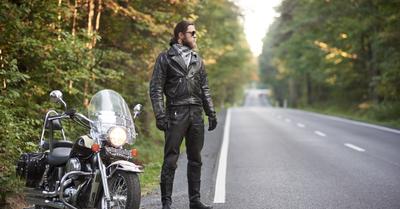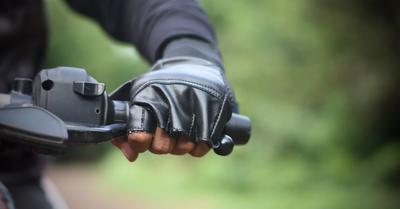Is It Bad To Hold In The Clutch On A Motorcycle?
From my experience, I can say that it's not bad to hold in the clutch on a motorcycle, as long as you do it properly. Holding the clutch is acceptable when braking, stopping, going downhill, or even during the ride. So, let me share some scenarios of when I found it necessary to hold the clutch.
First, when I'm braking. If I need to slow down or stop my motorcycle, I'll ease in the clutch while applying the brakes. This helps prevent stalling and ensures a smoother stop. The clutch cable is what makes it possible to change gears too.
Another situation is when I have to stop momentarily, like at a stop sign or traffic light. By holding the clutch, I can keep my bike in gear and be ready to accelerate when it's time to move again.
Going downhill can be another instance when pulling in the clutch is helpful. Pulling the clutch lever will remove engine power from the rear wheel. So this is why holding the clutch while riding downhill allows the motorcycle to coast smoothly without causing any harm.
Lastly, there are times when I hold the clutch while riding. As long as I fully disengage the clutch to avoid partial engagement, my bike remains safe. A partially engaged clutch can cause excessive heat and burn the clutch plate.
Will Holding In The Clutch Cause Motorcycle Damage?
The truth is, this depends. If you fully engage the clutch, there is not much of a risk for damage when you hold it in. So when you pull the clutch lever, the plates are uncoupling. This disconnects the engine and the transmission.
So when the clutch is fully engaged, there is minimal friction between the clutch plates and friction plates. This is known as the friction zone. A fully engaged (or disengaged) clutch won’t slip, meaning the wear and tear is minor.
That’s why many people will hold the clutch when they are stopped in traffic or at a stop light. It’s also commonly used by riders as a form of engine braking when coming to a stop.
Understanding Motorcycle Clutch Basics
As a rider, I've learned that understanding the clutch is essential for a smooth and enjoyable ride. In this section, we'll cover the basics of the motorcycle clutch, including its function and components.
Function of the Clutch
On my motorcycle, I use the clutch to control the transmission of power from the engine to the gearbox. It enables me to engage or disengage engine power in a gradual and safe manner, making it possible to shift gears, stop, or change speeds as needed.
Holding the clutch in all the way is not harmful, as long as it's done correctly, such as when braking, stopping, or going downhill. It’s better to use the clutch and rear brake at low speeds than just using the front brake too.
Clutch Pack Components
Motorcycle clutches consists of a few key components:
- Clutch plates: These create friction that enables the connection between the engine and the gearbox.
- Pressure plate: This applies and releases pressure on the clutch plates.
- Clutch basket: It holds the clutch plates together, ensuring proper alignment and function.
- Clutch cable: Connects the clutch lever to the pressure plate, allowing me to control the clutch's engagement and disengagement. This is one of the most important components.
The clutch is usually located next to the brake pedal. It's crucial to ensure that my clutch handle is pulled in all the way to avoid a partially engaged clutch, which can cause excessive heat and wear down the clutch plates.
Now that you know the basics of a motorcycle clutch, you can better understand when and how to use the clutch effectively, ensuring a safe and enjoyable riding experience.
When to Use the Clutch On a Motorcycle
It’s necessary to know when to use the clutch on your bike. It will allow you to be more effective riding and when operating other aspects of the bike like the rear brake.
Shifting Gears
One of the most common situations where I use the clutch is when shifting gears. By pulling in the clutch lever, I can momentarily disengage the engine from the transmission
This allows me to smoothly change gears without damaging the gearbox. When done properly, it ensures a seamless riding experience and prevents any sudden jerks or stalls.
When you start riding in first gear, you’ll need to gradually get the clutch into the friction zone. You can “ride the clutch” a bit on a motorcycle, but this is not something we’d recommend on a manual transmission car.
Starting and Stopping
Another essential time to use the clutch is while starting and stopping. When starting, I always pull the clutch in before turning on the ignition. This ensures that the engine starts without any sudden movements.
Similarly, when coming to a stop, I pull in the clutch to disengage the engine from the transmission, preventing a stall and ensuring I have complete control over my motorcycle. Once you accelerate again, you can let go of the clutch completely.
Controlling Speed
Controlling speed is another critical aspect of motorcycle riding, and the clutch is an essential tool for that. If I'm going downhill or approaching a tight curve, I'll pull in the clutch and use engine braking to slow down
Holding the clutch in temporarily while riding also helps me gain more control over my speed and maneuverability in tight spots, without constantly shifting gears or gravely affecting my motorcycle's performance.
Effects of Holding in the Clutch On Your Motorcycle
As a motorcycle rider, I often wondered whether it's bad to hold in the clutch on my bike. After some research, I found that it's not necessarily harmful, but there are certain times when you should and when you shouldn't.
Why It's Not Necessarily
Bad It turns out that holding in the clutch on a motorcycle is not bad when the clutch is either fully engaged or fully disengaged. In these situations, there's minimal wear on the clutch components.
This makes it safe to hold the clutch lever in for short periods of time, such as when coming to a stop or waiting at an intersection.
Potential Wear and Tear
If I hold the clutch lever in the friction zone, this can cause increased wear and heat on the clutch components.
But as long as I'm mindful of where the clutch is positioned when holding it in and avoid staying in the friction zone for too long, there's no reason to worry about causing undue wear on my motorcycle's clutch.
Safety Considerations
Lastly, I learned that there are safety considerations related to holding in the clutch on my motorcycle. For example, coasting with the clutch disengaged may reduce the effectiveness of engine braking.
This can make it more difficult to control my bike in certain situations, such as navigating corners. This is why it's important for me to be attentive to when and how I hold the clutch lever in while riding.
Tips for Proper Motorcycle Clutch Usage
As a motorcycle enthusiast, I can confirm that holding in the clutch on a motorcycle is not necessarily bad, as long as you're pulling in the handle all the way to ensure the clutch isn't partially engaged.
A partially engaged clutch can cause excessive heat and burn the clutch plates. Let's dive into some tips for using your motorcycle's clutch appropriately.
Smooth Shifting
One of the most important aspects of using a clutch is to ensure smooth shifting. To do this, I always make sure to pull the clutch handle in completely before changing gears.
This helps prevent unnecessary wear on my clutch plates and ensures that my shifts are smooth and efficient.
Avoiding Unnecessary Clutch Use
There are instances where using the clutch isn't necessary. For example, during slow-moving traffic, slipping the clutch while in neutral can help you coast forward, minimizing wear on the clutch.
However, when braking or decelerating, I avoid pressing the clutch along with the brakes as this can make the bike unstable. Instead, I gently apply the brakes to slow down the engine and shift into a lower gear without hitting the clutch.
By following these simple tips, my clutch stays in good working condition and my motorcycle ride is smooth and enjoyable. Remember, taking care of your clutch is an essential part of being a responsible and skilled rider.















